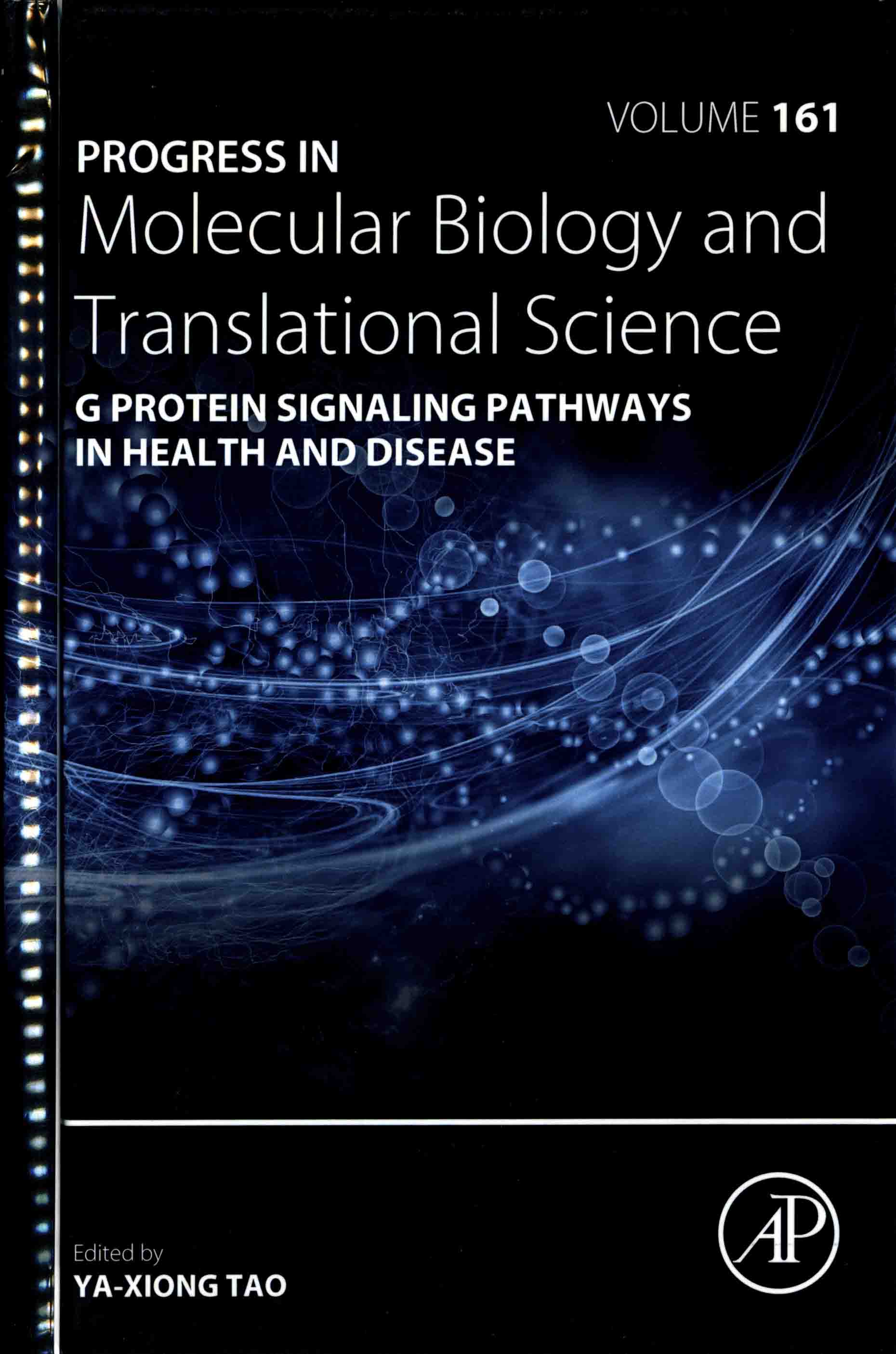 |
G protein signaling pathways in health and disease / edited by Ya-Xiong Tao. -- Cambridge, MA : Academic Press, 2019. – (58.178 /P964 /v.161) |
Contents
Contributors
Preface
1.
Diseases associated with mutations in CNGA3: Genotype-phenotype
correlation and diagnostic guideline
1.
CNGA3 overview
2.
Diseases associated with mutations in CNGA3
3.
Mutation spectrum and genotype-phenotype correlation
4.
Diagnostic guideline
Acknowledgments
References
2.
Arrestin mutations: Some cause diseases, others promise cure
1.
Arrestins in mammals: Few subtypes, many functions
2. Naturally occurring mutations in visual
arrestins
3.
Nonvisual arrestins: Unexpectedly few associations with unclear functional significance
4. Enhanced arrestins: Compensation of
excessive GPCR activity
5.
Conclusions
Acknowledgments
References
3. Mutations
in GPR101 as a potential cause of X-linked acrogigantism and acromegaly
1.
Introduction
2.
Molecular cloning and localization of GPR101
3.
Physiology of GPR101
4.
Pharmacology of GPR101
5.
Pathophysiology of GPR101
6.
Conclusion
Acknowledgment
References
4.
Diseases caused by mutations in luteinizing hormone/chorionic
gonadotropin receptor
1.
Introduction
2. Physiology and structure of LHCGR
3. The LHCGR gene and LHCGR protein
4. Signaling pathways activated by the LHCGR
5. Activating mutations of the LHCGR
6. Inactivating mutations of the LHCGR
7. Potential therapeutic strategies
References
5.
Physiology and pathophysiology of the β3-adrenergic receptor
1. Theβ-Adrenergic receptor system
2. Theβ3-AR: Structure and characteristics
3. Physiological relevance of β3-AR activation
4.
Human ADRB3 polymorphic variants: Potential pathophysiological roles
5. Summary
Acknowledgements
References
6.
Mutations in chemokine receptors and AIDS
1. Introduction
2. Disruption of CCR5 using engineered ZFNs
3. Disruption of CCR5 using engineered TALENs
4. Disruption of CCR5 using engineered CRISPR-Cas9
5. Disruption of CXCR4
6. Disruption of both CCR5 and CXCR4
7. Conclusions
References
7.
Physiology, pharmacology, and pathophysiology of neuropeptide S receptor
1.
Introduction
2. Molecular cloning and localization of NPSR1
3. Physiology of NPSR1
4. Pharmacology of NPSR1
5. Pathophysiology of NPSR1
6. Summary
Acknowledgment
References
8.
Prokineticins and their G protein-coupled receptors in health and
disease
1. Discovery of prokineticins and their receptors
2. Genomic structures of prokineticins
3. Protein structures of prokineticins
4. Genomic and protein structures of prokineticin receptors
5, Expression of prokineticins and their receptors
6. Physiological function of prokineticins and their receptors
7, Prokineticin system in diseases
8. Conclusion and perspective
Acknowledgments
Conflict of interest
References
9. Therapeutic strategies for diseases caused by
loss-of-function mutations in G protein-coupled receptors
1. Introduction
2. Selected diseases caused by loss-of-function mutations in G
protein-coupled receptors
3. Molecular basis of loss-of-function mutations in G protein-coupled
receptors
4. Therapeutic strategies
5.
Summary
References
Index